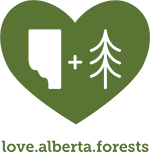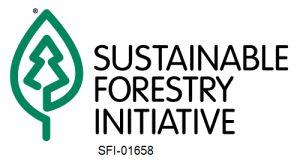Spray Lake Sawmills has recently put together a draft of a “Dispute Resolution Process”. Our intent is not to side-step the authority placed in the Alberta Department of Environment and Sustainable Resource Development as the ultimate manager and authority on land use activities which occur on Crown Land. Rather we are trying to develop a “good faith” working arrangement between Spray Lake Sawmills and various stakeholders who also have an interest in what is going on within our Forest Management Agreement Area. If you have any thoughts we would be happy to hear what you have to say.
Spray Lake Sawmills (1980) Ltd
Stakeholder Dispute Resolution Process
Spray Lake Sawmills operates under two different forms of tenure, a Forest Management Agreement (FMA) and a Coniferous Timber Quota (CTQ or quota). Both of these fall under provincial jurisdiction and are administered by Alberta Environment and Sustainable Resource Development (ESRD). All of the company’s timber supply areas are located on Crown land.
Within the FMA, Spray Lake Sawmills has the right to manage the forest for the primary purpose of establishing, growing, harvesting and removing timber under the principles of sustainable forest management. The Minister reserves the right to manage the FMA landbase for other interests such as, hunting, fishing, recreation, fire control, wildlife, seasonal protection of roads, trapping, grazing and geophysical activities. (This is a brief paraphrasing of Section 8 of the FMA)
The province currently has defined dispute resolution processes in place to address issues between the forest industry and the grazing and trapping sectors. Disputes which may arise between Spray Lake Sawmills and other resource users or generalized stakeholders/members of the public have no defined process for resolution, although it is generally recognized that ESRD is the primary administrative body that will provide a ruling on landuse related issues.
It is Spray Lake Sawmills’ intent to work in an open, collaborative manner with our stakeholders. Our hope is to work together and directly with them to find resolutions to any disputes. Requesting a ruling from ESRD is regarded as the last stage in a dispute resolution process and should only occur after efforts to resolve a dispute have been exhausted between the affected parties.
Dispute resolution should generally follow the sequence as given:
1) Engage in an open, meaningful conversation at the field level. Explore such things as: values and management objectives, define the issue(s), review any pertinent conditions within the tenure or conditions of operating plan approvals, explore strategies or tactics for a mutually agreeable solution.
2) If no resolution/agreement can be found at the field level then both sides should prepare a brief position paper and submit it to the next higher management level within each of the respective organizations.
3) If there is still no resolution to the dispute then both written briefs will be submitted to ESRD as the lead provincial agency to provide a ruling. Depending on the issue, other provincial departments or agencies with governance authority may be asked to participate in the discussion.
Depending on the parties involved and the nature of the dispute this process may not always fit the situation. However it can still be used to help provide an outline of the “intent” of the process to be followed.



How do the nearly 8,000 members of the public that have signed a petition requesting “a full and complete facilitated public consultation process BEFORE planning clear-cut operations,” enter into this dispute resolution process?
Hi Shaun
It is pretty hard to engage in discussions with a number on a petition. I believe the intent of our draft Dispute Resolution Process is fairly clear. It may not suite every variable or situation but the intent is to have meaningful discussion to explore options with those that may wish to do so.
I think that a petition of that size reveals how frustrated the public is in your closed door decision making process. SLS does not provide any option for the public to participate in providing input into the logging plans, other than an poorly advertised open house at locations other than the area concerned. Also, your email updates link is broken.
The petition is asking for “a full and complete facilitated public consultation process BEFORE planning clear-cut operations”. How do the 8,000 concerned citizens have a say in this secretive and hidden plan???
You are refusing to provide a map for the clear-cutting being planned in the West Bragg Creek area despite this map already being displayed in numerous closed doors meetings and at your poorly attended and poorly advertised open house. You stated previously that the map and details would likely be provided prior to the open house. Where is it???
Hi Shaun
I am glad you sent in your comments as there appears to be some misunderstanding about our upcoming plans. We have a number of different opportunities for people to review our plans and provide us with feedback.
To this point we have held an open house in Cochrane where we displayed our draft harvest plan for the area west of Bragg Creek. It is unfortunate you were unable to make it. We are aware that some people with an interest were unable to make it so we are in the process of planning another workshop later in June. The details for this event are still being finalized.
We have never refused to make our harvest plan maps available. We are still in the process of ground truthing the draft plans and will be posting them on the company’s website as soon as we have completed the field work. We expect this to occur somewhere around the end of the month. Until the ground truthing has been completed the plans are in a state of flux and will likely see some changes. We felt it would provide more confusion than clarity if we started to post draft versions that hadn’t yet been validated.
As you are aware we are also open for individuals to give us a call and make an appointment to come in and see the plans and talk to our woodlands staff.
Our planning staff have also been having discussions with various landuse and trail user groups over potential impacts on the areas trail system and mitigation measures which could be implemented during harvesting. You refer to these as closed door meetings but I believe these groups do a good job in representing recreational interests and have been a big help in plan development.